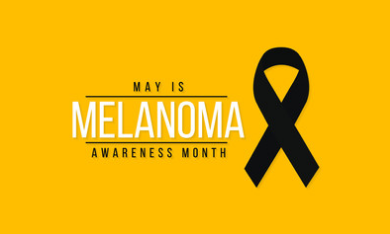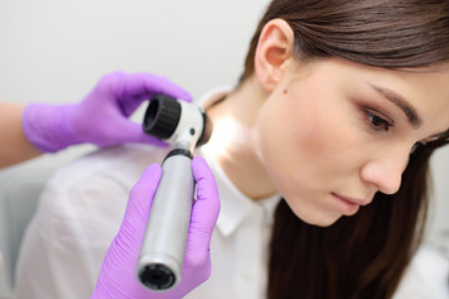IDENTIFY THE SKIN CANCER: SYMPTOMS
- 0 Comment(s)
- May 15, 2020

If you find any suspicious spot on the skin then it is recommended to see a doctor ASAP. It can be a signal of developing skin cancer in your body. Although, most dangerous melanoma cancer is close to 100 percent curable if diagnosed and treated early or on time. Besides, if you don’t notice or get it treated on time it may grow bigger, deeper, and more horrid. In fact, a number of spot can interrupt normal functioning and the dangerous types can even become life-threatening.
Dermatologists recommend the skin self-exams at least once a month (or more). They say that the self-examination should be performed in a well-lighted room with a floor-length mirror and a hand mirror should take no longer than 10 minutes once you get the hang of it. To ensure safety one should examine every inch of the skin, starting from scalp to the tip of feet.
Melanoma: Tricky To Spot
Melanoma more likely starts on the chest and back in men and on the legs in women. Most melanoma cells still produce the pigment melanin, so they are often black or brown, but they can also be pink, tan, or white.

Use The ABCDE Tool To Identify Melanoma
- A (asymmetry)- when one-half spot don’t match the other half.
- B (border of spot)- the boundaries are uneven or notched.
- C (color)- spot may have several different shades of brown, tan, or black, or colors like red, blue, or white.
- D (diameter)- it can be bigger than the eraser on a pencil, about 1/4 inch (although a malignant spot can be smaller if caught early)
- E (evolving)- observe the change in size, color, shape, or elevation
Some melanomas give different sins as well including, a sore that does not heal, increase of spot into the skin around it. You can also observe redness or swelling beyond the border of the spot. itchiness, tenderness, or pain in the spot. In fact the change of mole’s surface like oozing, bleeding, scaliness, or the appearance of a bump or lump.
Basal Cell Cancer
These are absolutely slow-growing skin cancers. They are often neglected till the time it hinders the body. If ignored longer they may begin to itch, bleed, or even hurt. They develop on particular parts of the body that is more likely to expose during sunlight like face, head, and neck, but they can appear anywhere.
Some spots look a lot like normal skin while others have distinctive characteristics. Flat, firm, pale, or yellow areas of skin, raised, reddish patches of skin that might be itchy or irritated. Few have small bumps that might be pink, red, pearly translucent, or shiny, possibly with areas of blue, brown, or black. Slight pink edges. Open sores with oozing or crusted areas.
The Basal cell cancer can bleed easily and they present themselves as a sore or cut from shaving or any such activity. But the foremost thing is they don’t heal even after a week or so.
Squamous Cell Carcinoma
Similar to the previous type this cancer tends to develop on body parts exposed to a lot of sun. Additionally, it may also appear in the genital area, scars or skin sores anywhere on the body. Squamous cell carcinoma may look like a healthy skin but there might be clear signs of malignancy:
- Rough or scaly red patches with bleeding or crust
- Raised lumps with or without depression in the center
- Oozing open sores or crusted areas, that don’t heal for weeks
- Growths that resemble warts
Some other skin conditions may be early form of Squamous cell cancer:
- Actinic Keratosis – it looks like small, crusty, or scaly bumps or hornlike lesions. It can look like a tiny spot to an inch wide. It can be dark or light skin-colored ranging tan, pink, and red.
- A variant of actinic keratosis is known as actinic cheilitis- it affects lower lip. You can observe chapping, cracks, and white discoloration.
- Leukoplakia – it causes white patches on the tongue, gums, cheeks, and other mucous membranes of the mouth. Moreover a continual red-brown, scaly, eczema-like patch on sun-exposed areas of the skin, the mucous membranes of the nose or mouth, or the genitals could be a sign of Bowen’s disease.
Book an appointment today! Call (361) 576-9100
